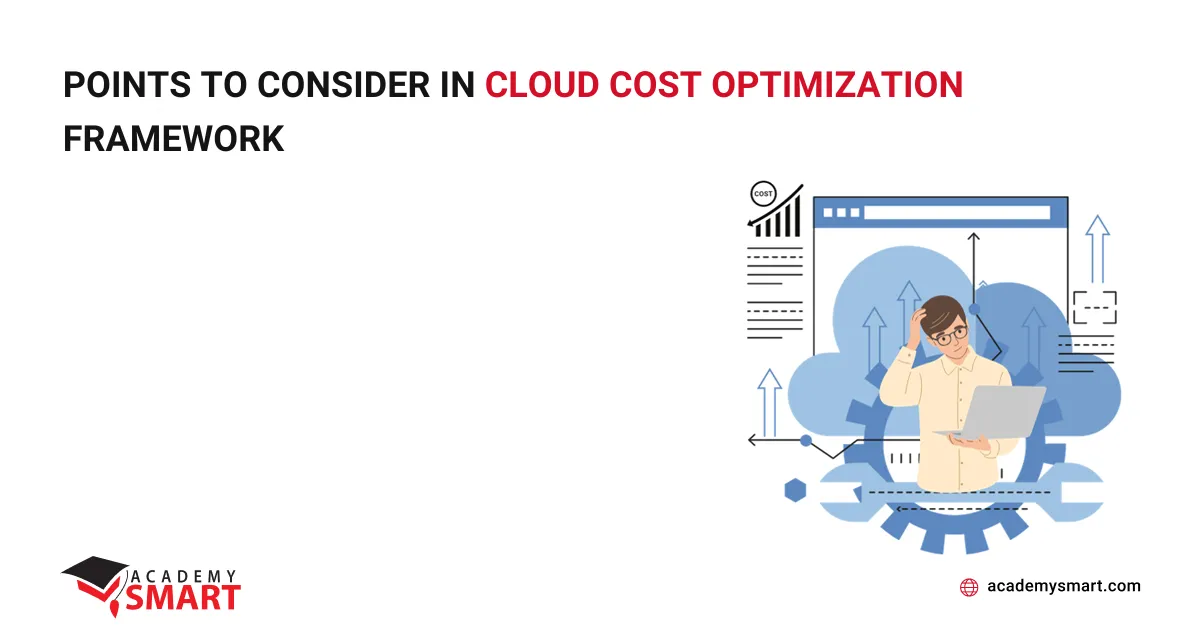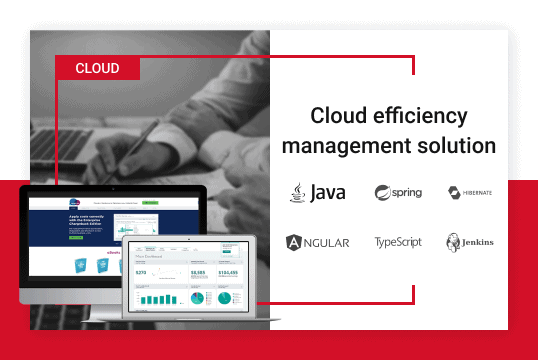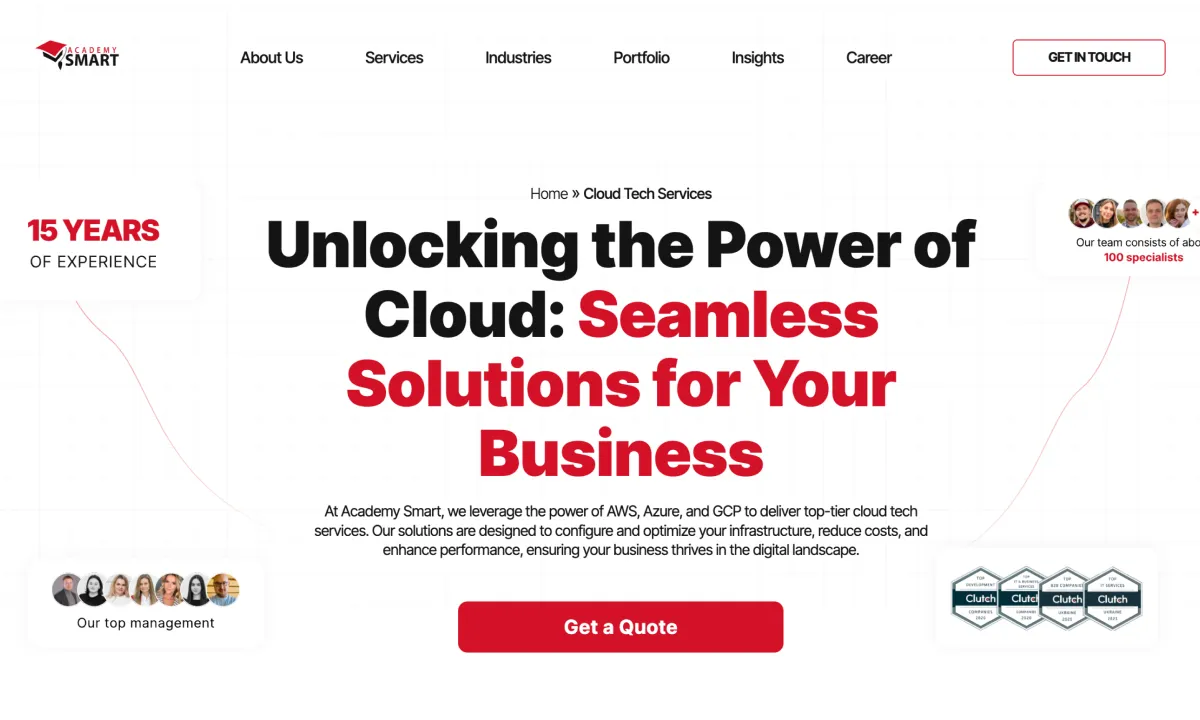
Points to Consider in Cloud Cost Optimization Framework
Contents
Many companies that seek ways to improve interactions with customers and employees, accelerate innovation, and raise their competitive edge view the moving from traditional on-premises data centers to the cloud as a part of further business strategy. Pay-as-you-go operational expenses are attractive for enterprises because they allow them to scale resources according to actual needs. However, real cloud service costs often exceed initial expectations, becoming challenging. That’s why any business needs to have a dedicated framework for cloud cost optimization prepared to monitor and control spending effectively.
Why Cloud Cost Optimization is Important for Your Business
Online businesses should utilize cloud cost optimization principles due to several compelling reasons. First and foremost, companies tend to waste a significant portion of their cloud spending, averaging 30%. Such waste can have notable financial pressure, whether an enterprise is small or big. To address this issue and reduce unnecessary expenses, a cloud cost optimization plan should propose methods to identify and rectify underutilized resources and overlooked tools.
Beyond merely decreasing price, cloud cost management aligns expenditures with business goals. Indeed, an increase in cloud computing outlay can be justified if the revenue, productivity, or profitability of the business increases too. So, the framework should adjust your expenses and expand business value without performance compromises.
An efficient cost optimization strategy goes beyond a cut of outlay associated with cloud operations, covering all processes of selecting and purchasing certain cloud services and optimizing existing ones. Considering the complexity of the cloud IT environment, it uses specialized analytical metrics and automated tools to make situative corrections. Leveraging savings programs and capacity reservations handles immediate savings opportunities while wisely matching cloud workloads to optimal configurations ensures long-term efficiency.
From a broader outlook, cloud cost optimization provides potent long-term benefits, for example:
- gaining granular insights into cloud costs,
- achieving cost savings by eliminating unnecessary services,
- improving margins by evaluating the cost of goods sold,
- opening up new revenue streams through data-driven insights,
- enhancing overall performance in the cloud,
- and fostering a cost-conscious culture within the enterprise.
Also, the framework has to ensure the visibility of the procedures with a more predictable expenditure assignment and easy cloud cost tracking. Of course, it should imply help on showback and chargeback practices implementation to ensure better accountability and improved cost funding.
Best Practices of Cost-Optimization in Cloud Computing
An enterprise’s goals assessment and the realistic estimation of cloud computing power required to support its business activities lie on the basis of success. It is the task of cloud cost optimization analysts to evaluate and align resources with specific purposes and describe changes needed in a clear and detailed roadmap.
Migration and rightsizing
For companies that migrate to the cloud, it’s necessary to establish clear and measurable objectives that reflect the intended packaging and delivery of products and features. These goals should consider speed and resiliency in general decision-making. With this, set a monthly budget based on the company’s needs. Understand project cost requirements, taking into account possibilities of free or trial pricing during the planning, development, and testing phases.
When selecting instance configurations from various cloud service providers, prioritize those relevant to specific workloads to avoid oversized configurations leading to unnecessary expenses. Proactively monitor computing resource utilization and establish key performance indicators (KPIs) for resource efficiency, encompassing CPU usage, disk usage, bandwidth, and memory metrics. Implement monitoring tools with alert notifications to track these metrics and identify underused resources. Such a strategic course builds a robust ground for prospective expenditure correction.
For enterprises already exploiting diverse cloud services, it is important to audit the current account setup for collecting accurate cost data. Ensure context collection from sources like CloudWatch, CloudTrail, and VPC flow logs to establish a single source of truth for total cloud spend. Align internal budgeting and escalation processes with business goals by considering subscription plans and software configuration changes, implementing a microservices architecture, or exploring multi-cloud or hybrid cloud solutions.
Explore accessible repository options, especially for frequently and infrequently processed data. Continuously review and adjust resources based on changing workloads. Promote cloud cost as a primary metric within the enterprise, providing real-time comprehensive performance monitoring of the cloud infrastructure. Leverage right-sizing tools to receive change recommendations across instance families, optimizing computing services for efficiency and cost-effectiveness. Detailed research of the current statement will help to pick the most effective measures in the following cost reduction strategy.
Excess costs sources identification
Several reasons often lead to higher expenditures. Firstly, the intricacies of software licenses play a pivotal role. Failure to manage licenses efficiently, including comprehending the terms, usage restrictions, and renewal dates, can result in unexpected outlay. Enterprises must adopt a meticulous software asset management approach to mitigate this risk.
Secondly, selecting a subscription plan is an influential element, too. Opting for inappropriate tiers that do not align with usage patterns can lead to overpayment. Regular evaluations of subscription plans and adjusting them based on evolving needs ensure optimal resource allocation and cost-effectiveness.
Cloud software development life cycle also influences costs significantly. Unoptimized CSDLC processes may lead to extended development times, increased resource consumption, and associated expenses. Significant cost savings are possible if the cloud app development workflow is more productive. That is why it is essential to prefer developers with agile development practices and robust cloud expertise.
To check existing software architecture is a proven way to avoid inadequate resource usage and higher costs. If it is unoptimized for the cloud, the investment in rebuilding apps according to cloud-native standards will soon enhance their cost-effectiveness.
Lack of monitoring and exploitation of suitable automation tools is another common pitfall. Implementing automated monitoring tools like Amazon CloudWatch, Datadog, Dynatrace, Prometheus, or Google Cloud Operations Suite helps identify performance bottlenecks and resource excess, facilitating proactive cloud cost governance.
It may not seem obvious, but in-house staff training is also required to manage cloud outlay wisely. Inadequate awareness among team members can lead to suboptimal resource usage and increased price. Investing in proficiency ensures the workforce is skilled enough to operate cloud computing capabilities as your business needs.
Сloud resource management optimization
When all potential sources of financial leaks have been identified, and a clear strategy for cloud spending optimization has been defined, various IT engineers come into play: cloud architects, developers, DevOps, and cloud administrators, to bring the technical configuration of the cloud infrastructure to the parameters stated in the roadmap. This checklist may help you cut cloud-related fees, just combine its points wisely:
- Deployment automation
Automating the deployment process is a cornerstone of cost optimization. Tools like AWS Auto Scaling and Azure’s Autoscaling enable dynamic adjustments to resource usage based on application requirements. They prevent over-provisioning and unnecessary waste during low-demand periods. - Appropriate storage options
Selecting the right storage type is crucial for cost optimization. For instance, AWS S3 offers various repository tiers with significantly different prices. Utilize S3-Intelligent Tiering to automatically track usage patterns and choose the optimal storage tier, preventing overspending. - Cloud-native rearchitecting
Adopting a cloud-native design involves replacing existing systems with more cost-efficient, scalable solutions. Utilize tools like Kubernetes for effective autoscaling, allowing dynamic adjustments to computing resources based on usage patterns. It precludes costs associated with idle resources. - Multi-cloud and hybrid cloud strategies
Choosing between a single or multi-cloud deployment involves evaluating costs, vendor lock-in, and availability. While multi-cloud environments enhance availability, they can be expensive. In contrast, single-cloud and hybrid environments may offer discounts with large-volume purchases. The article “What is the Difference Between Multi-Cloud and Hybrid Cloud Architecture” concerns this tech stack decision. - Serverless adoption
Moving towards a serverless architecture, where computing resources are managed automatically, can significantly reduce expenses. Services like AWS Lambda and Azure Functions allow companies to pay only for the actual compute time used, eliminating costs associated with idle resources. - Reserved Instances
Reserved Instances (RIs) are a pricing model offered by AWS, where users commit to a one- or three-year term for a specific instance type, region, or availability zone. In return for this commitment, users benefit from a substantial discount of up to 75% compared to pay-as-you-go pricing. Azure follows a similar approach with its Reserved VM Instances, while Google Cloud provides Committed Use Discounts, allowing users to commit to consistent usage for one or three years much cheaper. - Spot Instances
It is a cost-saving option primarily offered by Amazon, but similar variations exist in other major cloud providers. AWS Spot Instances enable users to bid for unused computing capacity, providing an opportunity to access resources at significantly reduced prices compared to on-demand instances. However, it’s important to note that Spot Instances come with the trade-off of potential interruptions, as they may be terminated if the cloud provider needs their capacity. Azure and Google Cloud also offer similar concepts, allowing users to access spare computing at discounted rates, albeit with some unpredictability in availability. - Savings Plans
This saving mechanism introduced by Amazon AWS offers users a flexible and cost-effective alternative to traditional RIs. With Savings Plans, users commit to consistent usage (measured in $/hr) for a one or three-year term but gain flexibility regarding instance type, family, region, and platform. AWS then provides significant cost savings, up to 72%, compared to pay-as-you-go pricing. Azure and Google Cloud have their variations – Azure Reserved VM Instances and Google Cloud Committed Use Discounts – each tailored to offer users discounted rates in exchange for a commitment to a specific usage over a defined period.
Continuous monitoring and third-party cost optimization tools
Real-time monitoring and analytics is a pragmatic management approach. Key metrics like CPU and memory utilization, network traffic, storage usage, instance uptime, and error rates should be monitored to identify anomalies.
Building a culture of cost awareness is equally important. Usually, companies that succeed in cloud optimization establish reliable FinOps frameworks utilizing complex monitoring dashboards, both cloud provider-specific and external. AWS, for example, provides a specific console with cost anomaly detection features. Using its machine learning algorithms, users can set budgets, forecast prices, and identify spending irregularities. Alerts can be configured to notify users when approaching or exceeding budget thresholds, facilitating proactive AWS cloud cost optimization capabilities.
Third-party software tools are also usable in cloud expenditure management. Cloudzero, Haystax OptScale, or Economize provide advanced budget reports, adaptable warnings, personalized labeling, and TTL rules. They ensure businesses have a clear budget breakdown for each business unit, user, project, and CI/CD job, preventing surprises in cloud bills. Tools like Densify or Cloudyn create differentiated reports that expose waste and spending patterns. By tracking the effectiveness of your cloud investments 24/7 and using suitable AWS, GCP or Azure cloud cost optimization services, you guarantee your business profits and prosperity online.

Multi-cloud cost optimization tool we delivered
Get Your Cloud Cost Optimization Benefits with Academy Smart
Delegate your cloud cost optimization assessment to cloud migration specialists with over 14 years of experience. Main our services include:
- evaluating the efficiency of your existing cloud infrastructure;
- transforming monolithic applications into native cloud ones;
- integrating serverless technologies for optimal performance;
- designing turnkey applications for hybrid and multi-cloud environments.
We work to ensure that your business activities in the cloud bring you profit. Get in touch to introduce us to your project’s intricacies.
Frequently Asked Questions: Cloud and Cost Optimization
What is cloud cost optimization?
Optimization enhances the cost-efficiency of a cloud environment and keeps the proper performance.
What do cloud cost optimization services usually include?
Cost optimization in the cloud typically involves infrastructure evaluation, application rearchitecting, serverless integration, hybrid and multi-cloud design, and continuous cost monitoring and management.
Book a free consultation

Reach out to start talking today!










